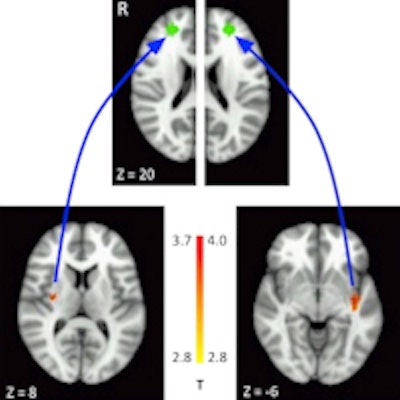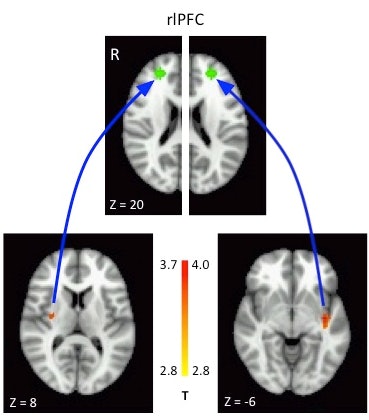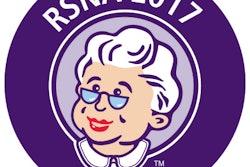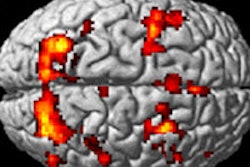
Understanding the daily actions of preteens is a daunting task in general, but researchers from the University of California, San Francisco (UCSF) have had early success in using functional MRI (fMRI) to investigate why some might explore more than others.
Certain brain regions of preteens who are prone to experimenting or exploring new adventures process information differently than those who tend to be more cautious, according to study author Dr. Andrew Kayser, PhD, and colleagues.
Specifically, the researchers uncovered a stronger connection between the rostrolateral prefrontal cortex and the posterior insula and putamen in the brains of subjects who tended to explore. The rostrolateral prefrontal cortex has also been associated with a tendency to explore in adults.
 Dr. Andrew Kayser, PhD, from UCSF.
Dr. Andrew Kayser, PhD, from UCSF.Kayser and colleagues plan to follow the preteens over the next several years; depending on how the research progresses, the results could help provide a biomarker to predict the potential for risky behaviors such as smoking, substance abuse, or gambling.
Reward-based task
The study included 62 girls between the ages of 11 and 13 who completed a task that measured their exploratory and experimenting behavior.
While in a 3-tesla MRI scanner (Magnetom Trio, Siemens Healthcare), the girls were instructed to watch the movement of the second hand on a clock, which made a complete rotation over five seconds.
The subjects were told they would earn points based on when they stopped the second hand. Therefore, they would need to stop the second hand at different times, or explore the task, to learn what action would be rewarded most.
Based on the results, the 62 girls were divided into a group of 41 so-called "explorers" and 21 "nonexplorers."
When two groups were compared, fMRI showed a stronger connection in the explorers between the rostrolateral prefrontal cortex and the posterior insula and putamen regions of the brain.
In addition, activity in the putamen and insula seemed to influence the rostrolateral prefrontal cortex, rather than the other way around.
"We targeted the rostrolateral prefrontal cortex in part because this region of the adult brain is shown to be important for exploration directly," Kayser explained. "If you are trying to decide if you should continue what you are doing or pursue another strategy, even if it's not rewards-related, as our study was, the prefrontal cortex seems to be important for that."
The researchers speculated that the posterior insula and putamen were involved because the insula may influence uncertainty and the putamen may reflect the success of other reward-related action plans.
 The comparison of functional MR images shows regions of interest in the rostrolateral prefrontal cortex (top) and the connected areas in the striatum/insula (bottom images). Blue arrows indicate how the regions influence each other. Image courtesy of Dr. Andrew Kayser, PhD.
The comparison of functional MR images shows regions of interest in the rostrolateral prefrontal cortex (top) and the connected areas in the striatum/insula (bottom images). Blue arrows indicate how the regions influence each other. Image courtesy of Dr. Andrew Kayser, PhD.Kayser said the crux of the research is that it could advance knowledge of how exploration can lead to both good and bad behaviors that promote or reduce well-being in teenagers.
The researchers plan to follow the brain development of the subjects over the next several years and image them again at different time points.
"It is a longitudinal study to see how these behaviors that we measured at 11 to 13 years correlate with both their behavior now and their development over time, and whether these measures correlate with risky behavior, such as smoking, and how they correlate with cognitive development," Kayser said.
Funding for the study has come from somewhat untraditional sources: The U.S. Department of Defense (DOD), the National Center for Responsible Gaming (NCRG), the Wheeler Center for the Neurobiology of Addiction, and the state of California have all provided financial support.
Kayser said all of the entities are "interested in the development of behaviors that are maladaptive." For example, DOD could benefit from the screening of new recruits to see whether alcohol or other addictions might derail a unit's cohesion or the ability of soldiers to fulfill their duties, he said.
"They are trying to figure out how to help these folks and intervene early, if possible," he added. "You can imagine a more direct goal for the NCRG and the Wheeler Center."
The study is scheduled to be presented at the American Academy of Neurology (AAN) annual meeting being held in Washington, DC, April 18 to 25.



.fFmgij6Hin.png?auto=compress%2Cformat&fit=crop&h=100&q=70&w=100)




.fFmgij6Hin.png?auto=compress%2Cformat&fit=crop&h=167&q=70&w=250)











